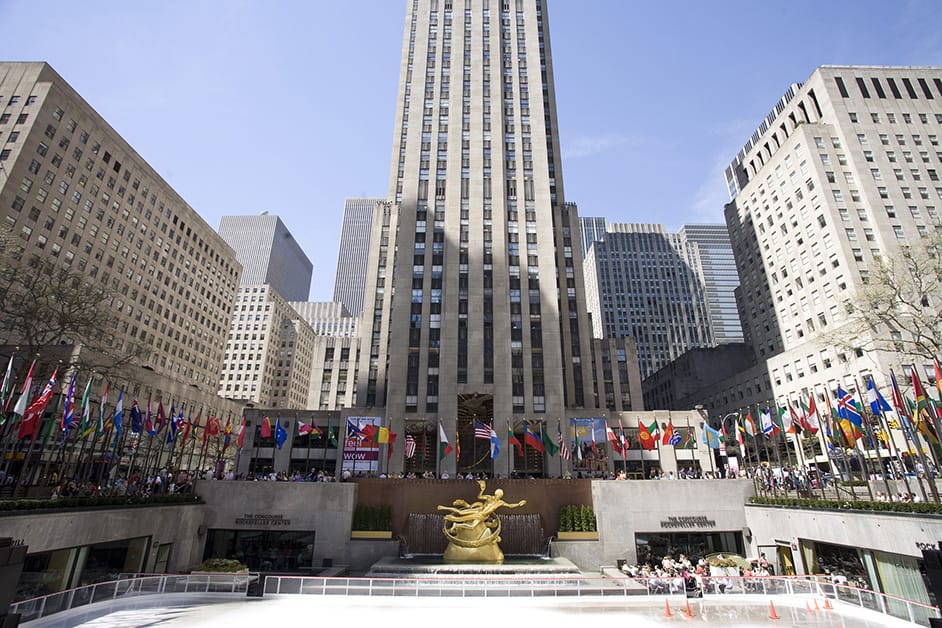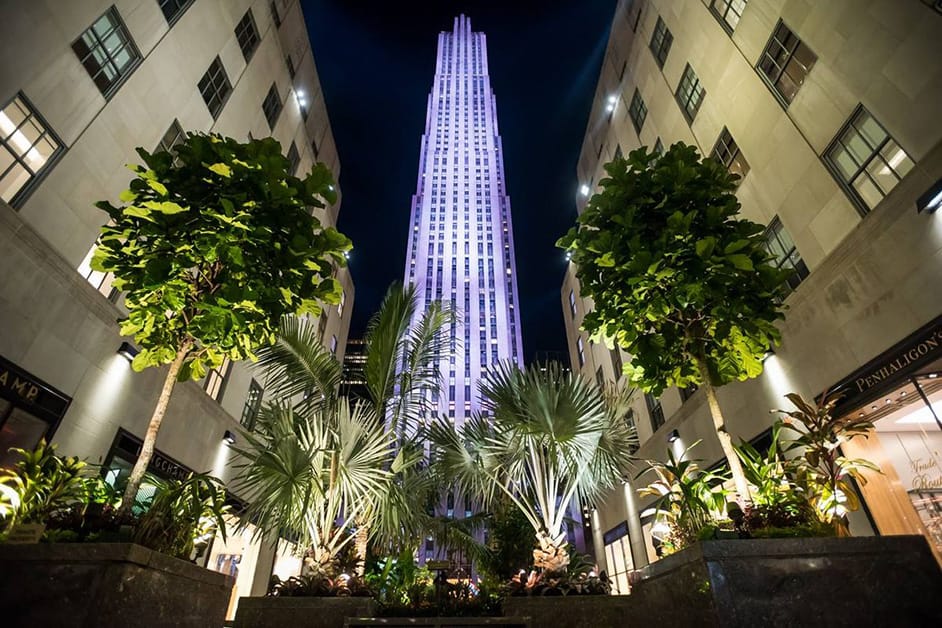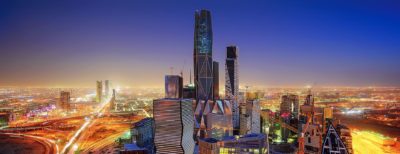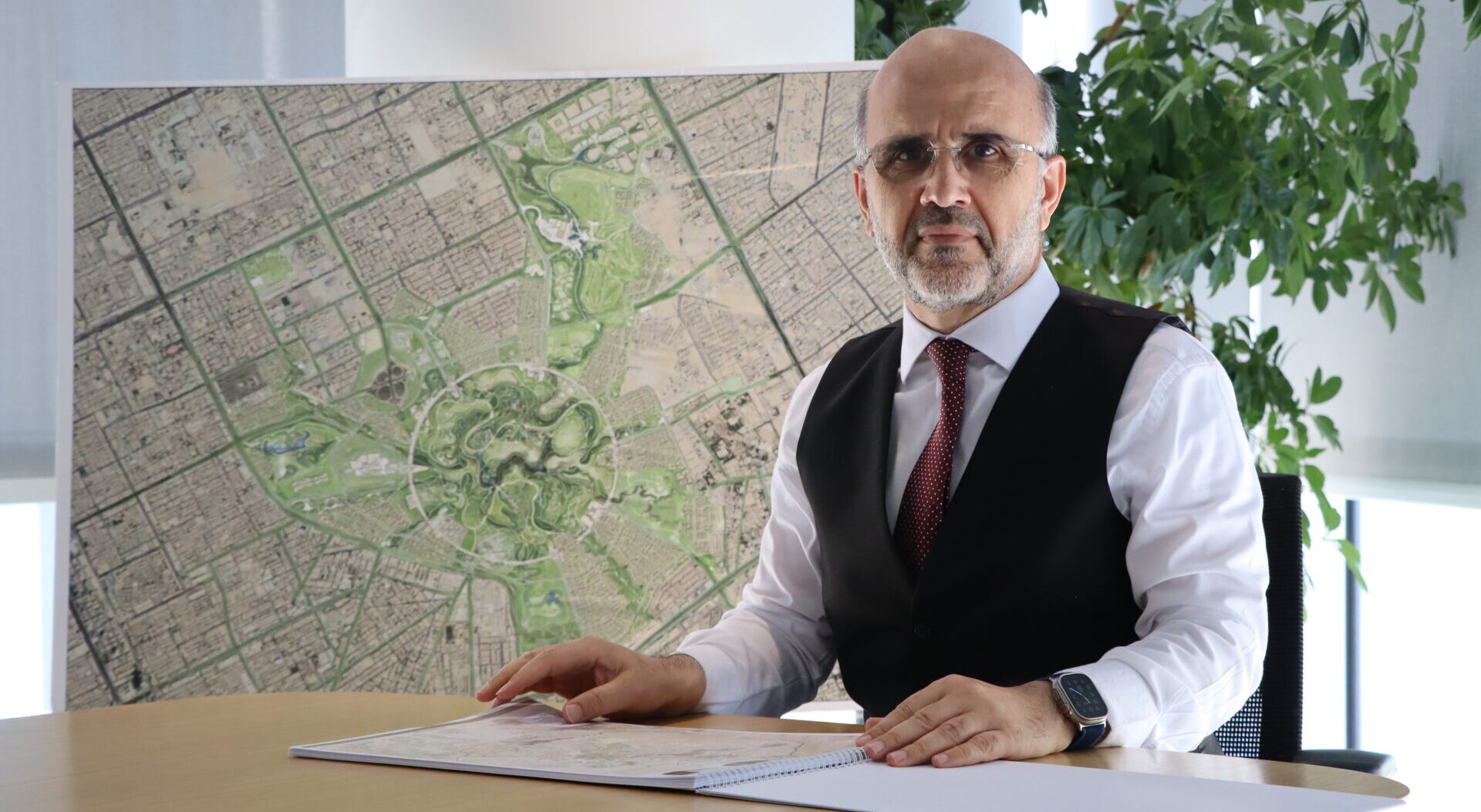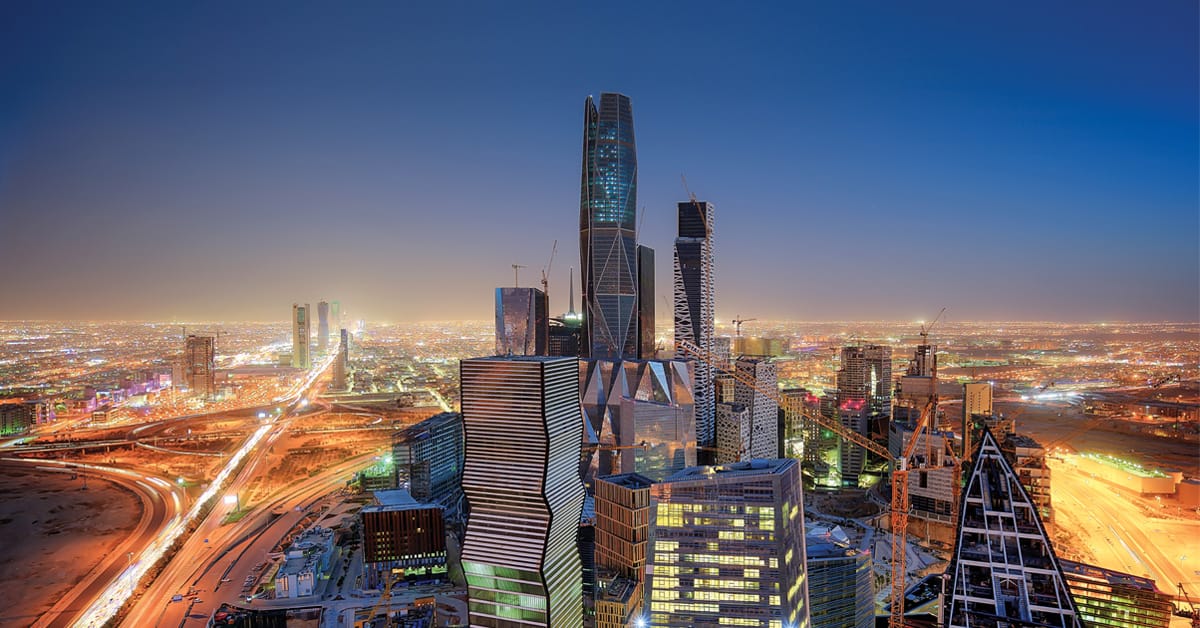 The Riyadh skyline punctuated by the 385-meter Capital Market Authority (CMA) Headquarters designed by Omrania and HOK. Image © Faisal Bin Zarah.
The Riyadh skyline punctuated by the 385-meter Capital Market Authority (CMA) Headquarters designed by Omrania and HOK. Image © Faisal Bin Zarah.
Tall buildings require a tremendous amount of energy to construct and to operate, but they also offer tremendous opportunities for innovation and sustainability.
The construction industry is one of the greatest contributors to CO2 gasses in the world. As buildings get taller, that number is only going to rise unless dramatic changes are made to how they are designed and built. But tall buildings also possess unique characteristics that can help mitigate the problem.
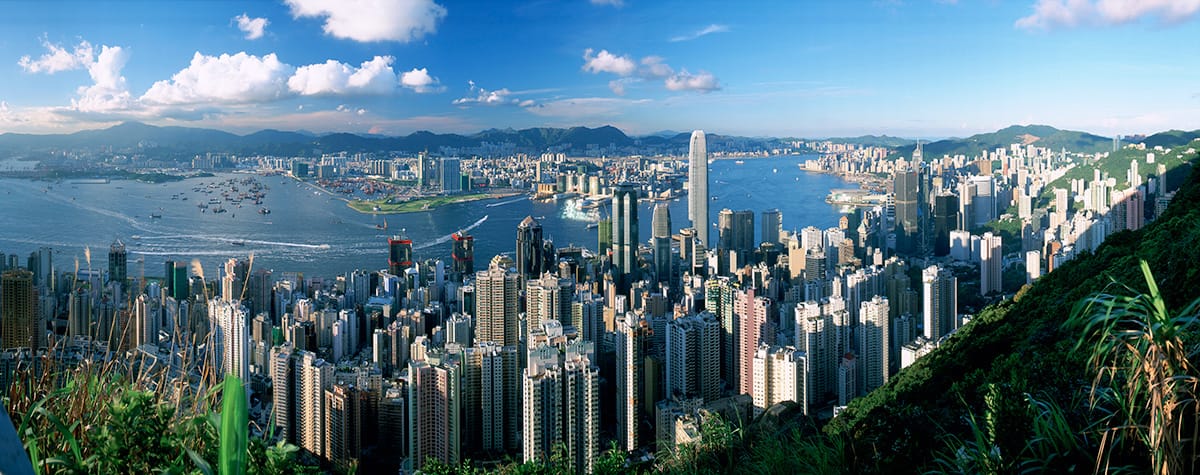
Hong Kong Island District view from The Peak Galleria. Density allows cities to grow taller, thus maintaining the surrounding landscape and supporting efficient rapid transit systems. Image © The Peak Galleria
Density. At the most basic level, tall buildings promote denser cities. Why is this a benefit? Because global populations are rising and cities are growing in size and population. Tall buildings provide a variety of options for housing and offices, allowing a city to grow without expanding its boundaries or claiming green space or farmland. Compared to low-density communities with poor public transit options, dense cities are more efficient and promote a healthier lifestyle — heather for residents and for the environment.
Rockefeller Center, New York, designed in the 1930s by a consortium of architects led by Raymond Hood and Wallace Harrison, was a pioneer of mixed-use high-rise development.
Mix of uses. Additionally, tall buildings, like Omrania’s Kingdom Centre and CMA Tower (designed in a joint venture with HOK), are increasingly designed as mixed-use structures housing a combination of offices, fitness and lifestyle amenities, cultural spaces, apartments, hotel rooms, and retail and event spaces. These “mini cities” can create a sense of community while also promoting the larger community around the building with pedestrian street traffic that’s good for local businesses.
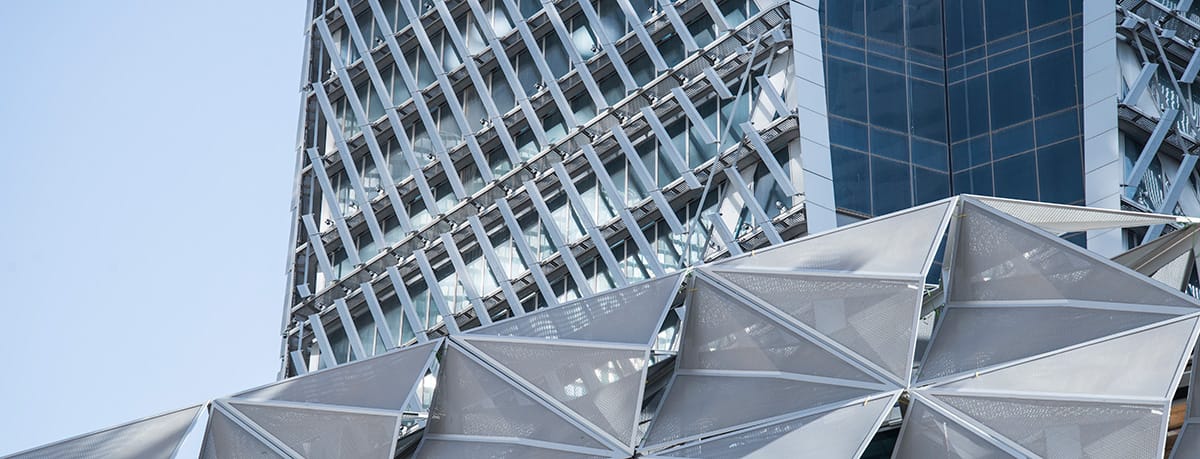
A sophisticated building envelope system conserves energy at the CMA Headquarters tower designed by Omrania and HOK. Image © Hani Al-Sayed / Omrania
Technology. Taller buildings also inspire innovation. The development of the elevator, fire proofing, and advancements in concrete and steel construction have all resulted from a desire to build taller, safer, more efficient buildings. These innovations have, in turn, trickled down to transform the entire built environment by shaping building codes and policies all around the world. The current frontier of tall building engineering includes innovations in lightweight structural design, multi-dimensional elevator systems, and high-performance building envelopes.
Sustainability. As sustainability becomes a primary concern in the design of tall buildings, investment will increase in new technologies that may seem like science fiction today but will soon be as common as the elevator. For example, structural “mass timber” and cross-laminated timber construction using sustainable harvested wood is becoming more feasible for tall buildings — in part thanks to research by architects and engineers. A 2013 study by architecture firm SOM found that a using a mass timber structural system instead of reinforced concrete could reduce a building’s carbon footprint by 60-75%.
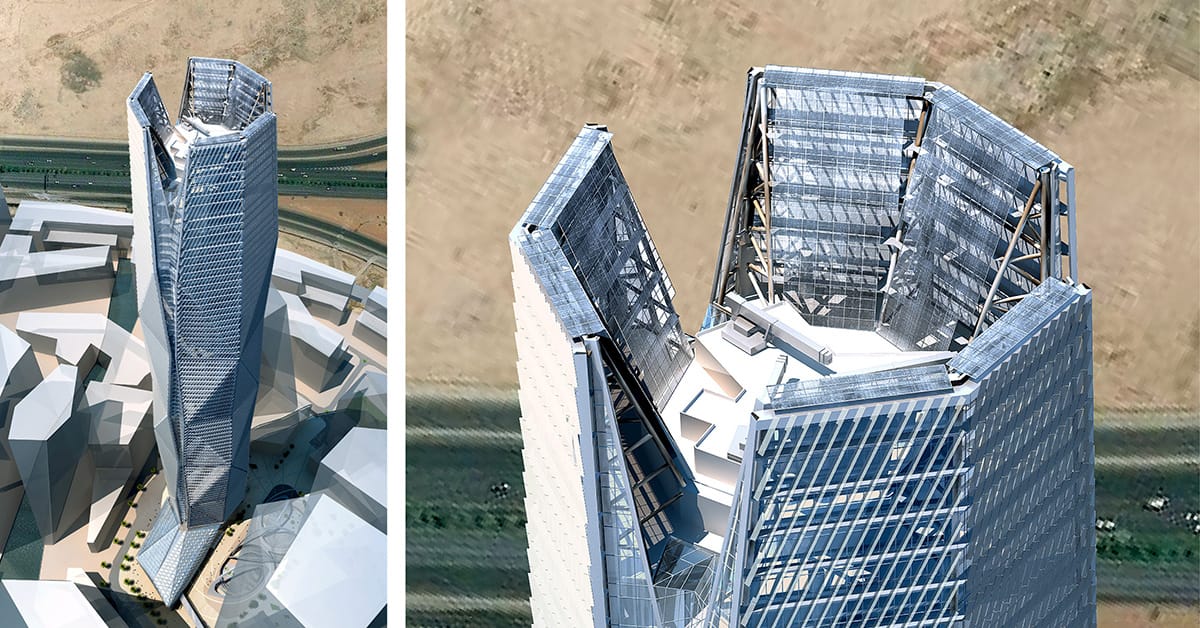
CMA Tower, Riyadh. Innovations in photovoltaics and energy-generating glazing will allow tall buildings to produce more of their own energy. Image © Omrania/HOK.
Solar and wind. Solar panel technology may also benefit from interest by architects and engineers looking to make their buildings more efficient. This is because solar panels are more effective at greater heights, where exposure to the sun is more direct and less prone to shading by neighboring buildings. But the real breakthrough for high-rise buildings, long sought by solar engineers, may come in the form of an energy-generating glazing that could be used to clad an entire skyscraper without disrupting its appearance, thereby making the entire building an energy producer. Wind energy is another growing industry that can benefit from tall buildings. Wind speeds increase with altitude, and with new buildings racing toward 1,000 meters high, it’s becoming more common to install small turbines to capture some of this natural energy, which can help power the building’s mechanical and electrical systems.
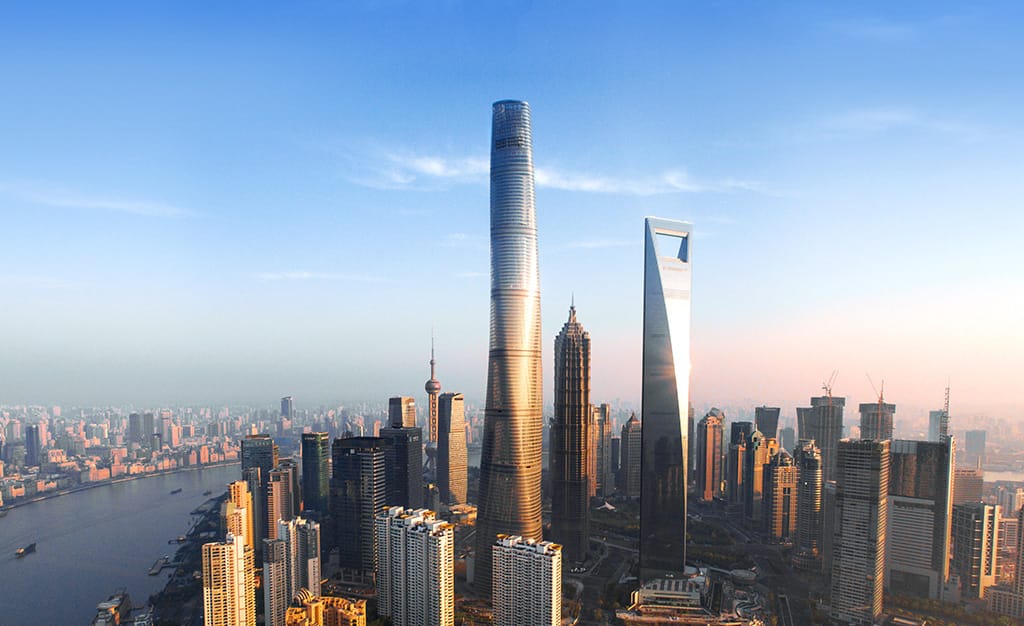
Shanghai Tower, by Gensler. Skyscrapers must be oriented and designed to optimize passive cooling. Image © Gensler
Passive cooling. But even without these high-tech products, designers can take advantage of certain environmental factors that are unique to tall and super-tall buildings. Similar to old homes designed to capture cross breezes to create passive cooling, a tall building can be designed to capture prevailing winds as part of its intake and exhaust system. For buildings in hot climates like Saudi Arabia, where cooling loads are large, capturing the cool, dry air found a few hundred meters above the ground can help reduce the amount of energy needed to cool the building. The building’s exhaust can also be positioned to allow the wind to help remove unwanted air.
There are a lot of challenges in designing tall buildings, but as we invest in overcoming these challenges and promoting innovation, they have the potential to inspire healthier, more sustainable cities.






